Home / Guides / Lifestyle Guides / Is Honey Vegan?
Is Honey Vegan?
A practical guide to answering the question, “Can you eat honey as a vegan?”
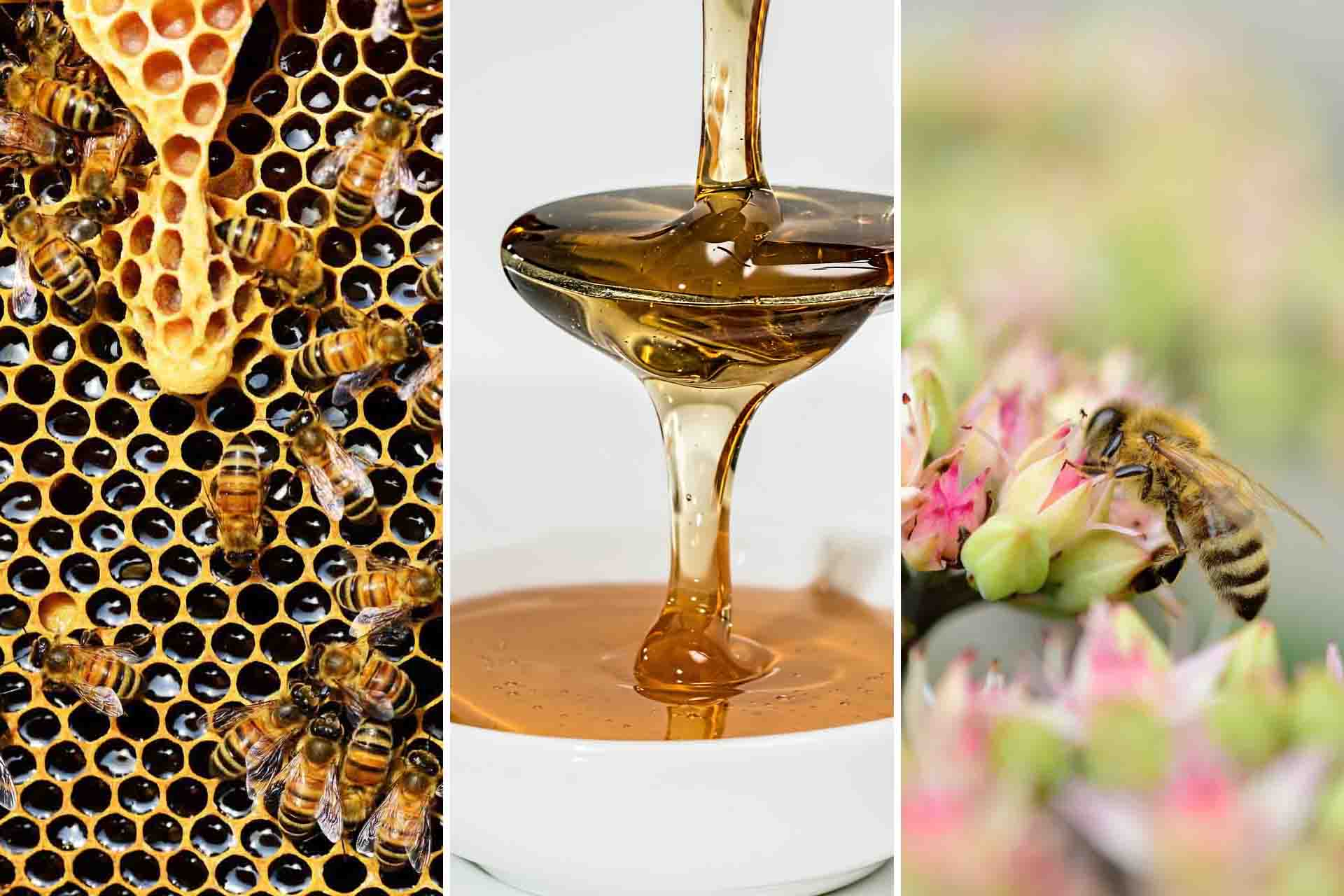
Published: June 2014
Last Update: January 2023
Reading Time: 40 minutes
Honey is a hotly debated topic
Vegans avoid honey and bee products because bees make them. This avoidance makes sense. Vegans avoid animal products, and a bee is an animal.
But some people disagree and believe that avoiding minutia ingredients like honey can harm the vegan movement by appearing too rigid or demanding.
So, who’s right?
Does the cultivation of honey and bee products hurt animals? What about the environment? Are bees animals? Are vegans just being extreme?
Let's find out.
QUICK NAVIGATION
FAQ / Animals / How / Beekeeping / Health / Help / Alternatives / Purity
1. Frequently Asked Questions
Answers to the most commonly asked questions about honey and veganism.
The top vegan questions about honey
It's a big topic, but a few questions arise more than others.
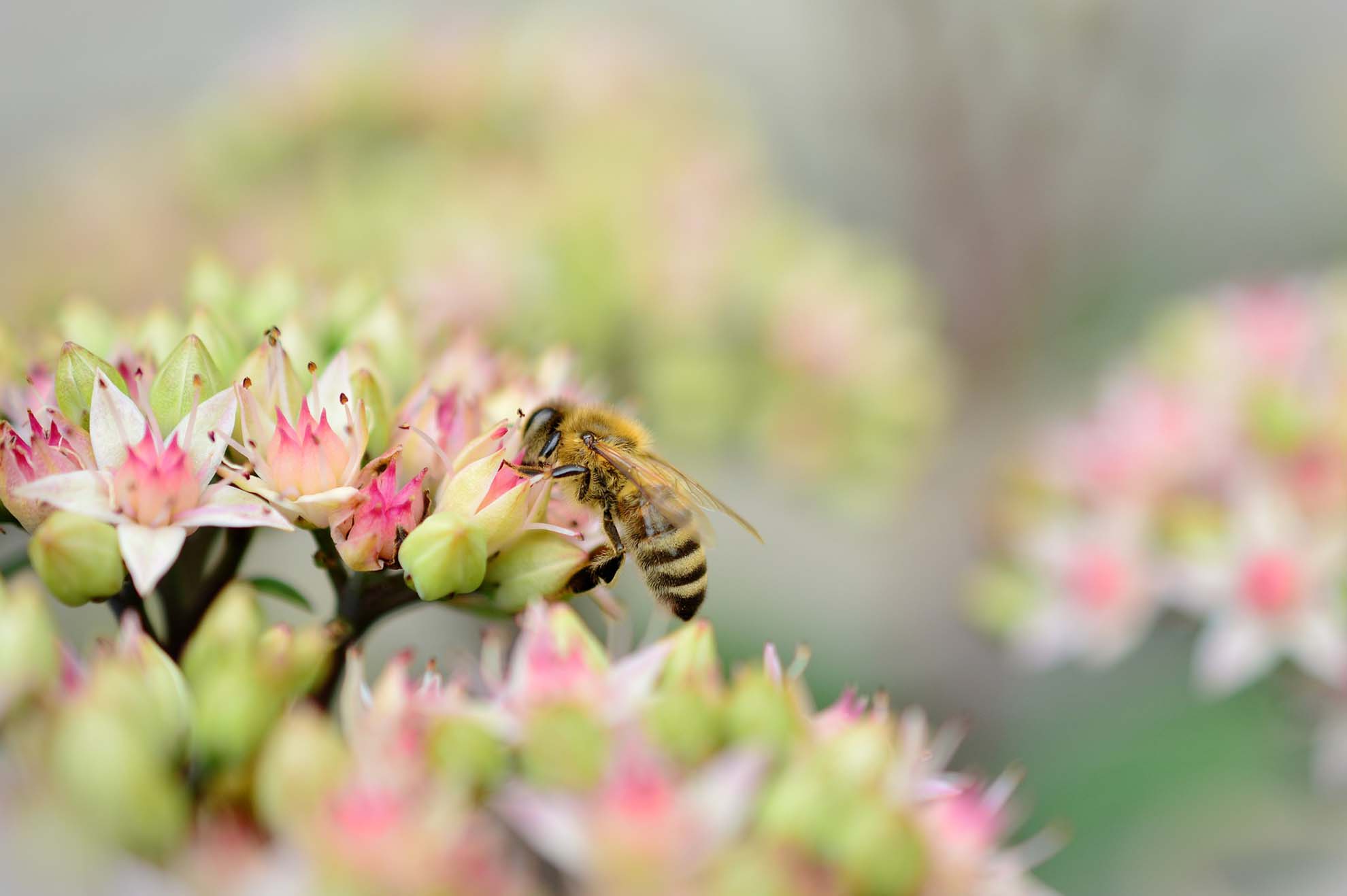
Bee searching for nectar / Source
FAQ / Animals / How / Beekeeping / Health / Help / Alternatives / Purity
2. Are Bees Animals?
Bee basics.
If you were to ask, most people would be able to tell you that a dog is an animal. There’d be no debate about it.
But should you ask the same people if a bee is an animal, you’ll hear various answers.
A lot of them are incorrect.
Bee facts
Bees are flying insects related to wasps and ants. There are nearly 20,000 known species of bees on every continent except Antarctica.
Insects are a class of invertebrates within the arthropod phylum with a chitinous exoskeleton or outer covering, a three-part body (head, thorax, and abdomen), and three pairs of jointed legs, compound eyes, and one pair of antennae.
Among some of the most diverse groups of animals on the planet, including more than a million described species, insects represent more than half of all known living organisms. The number of extant species (living species) is between six and ten million, potentially representing over 90% of Earth’s differing animal life forms. (1)
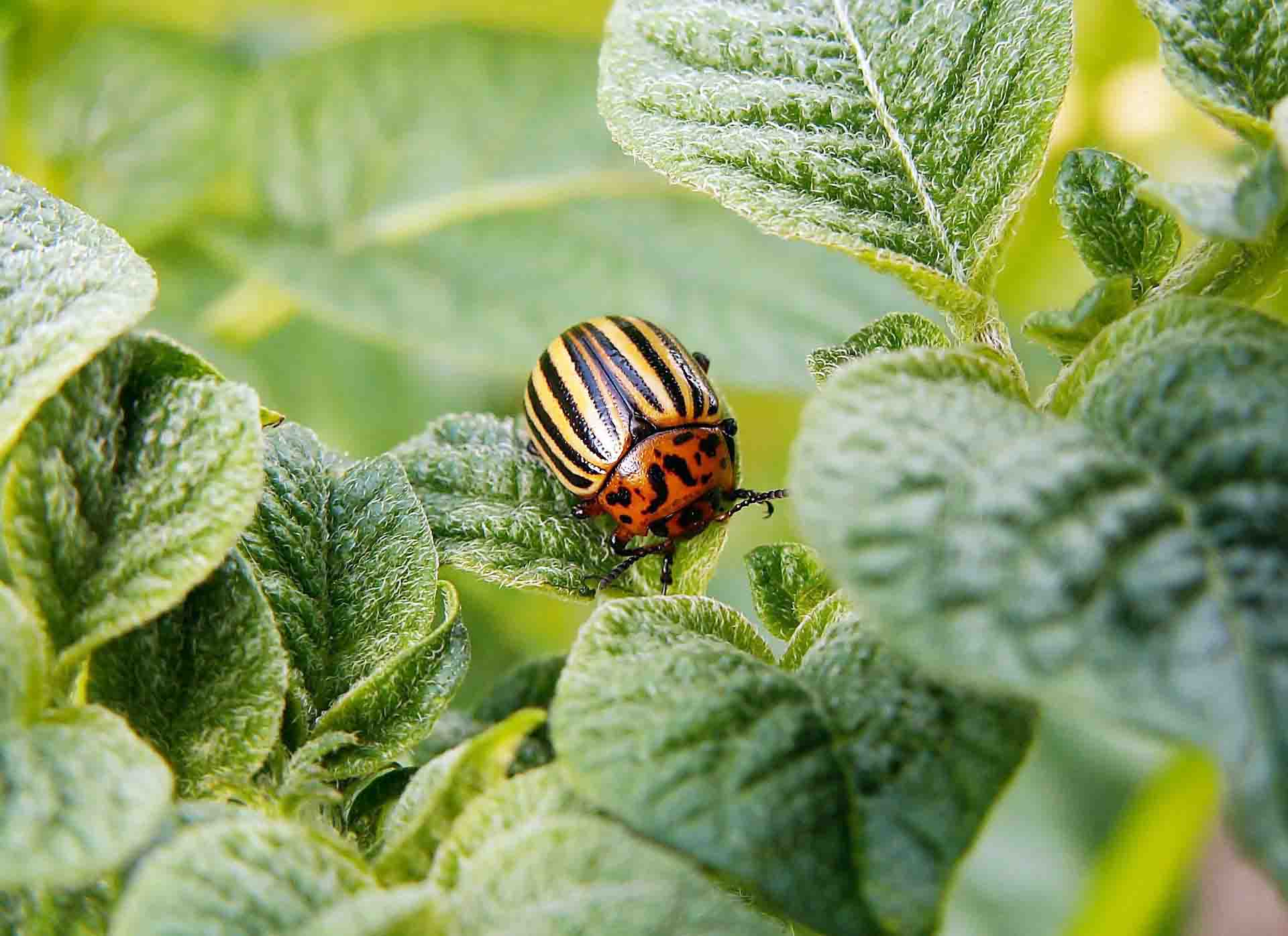
Colorado Potato Beetle / Source
The importance of insects
Insects play a vital role in our ecosystem, which includes many functions such as soil turning and aeration, dung burial, pest control, wildlife nutrition, and pollination.
Take beetles, for example. They’re scavengers who feed on dead animals, fallen trees, and other decaying matter. By doing so, they recycle biological materials creating the rich topsoil our crops need to thrive.
Like butterflies, insects are also food for larger animals. Not only that, some insects feed on other insects damaging crops. Ladybugs feed on aphids, for instance. Finally, insects such as wasps, bees, butterflies, and ants are pollinators of flowering plants.
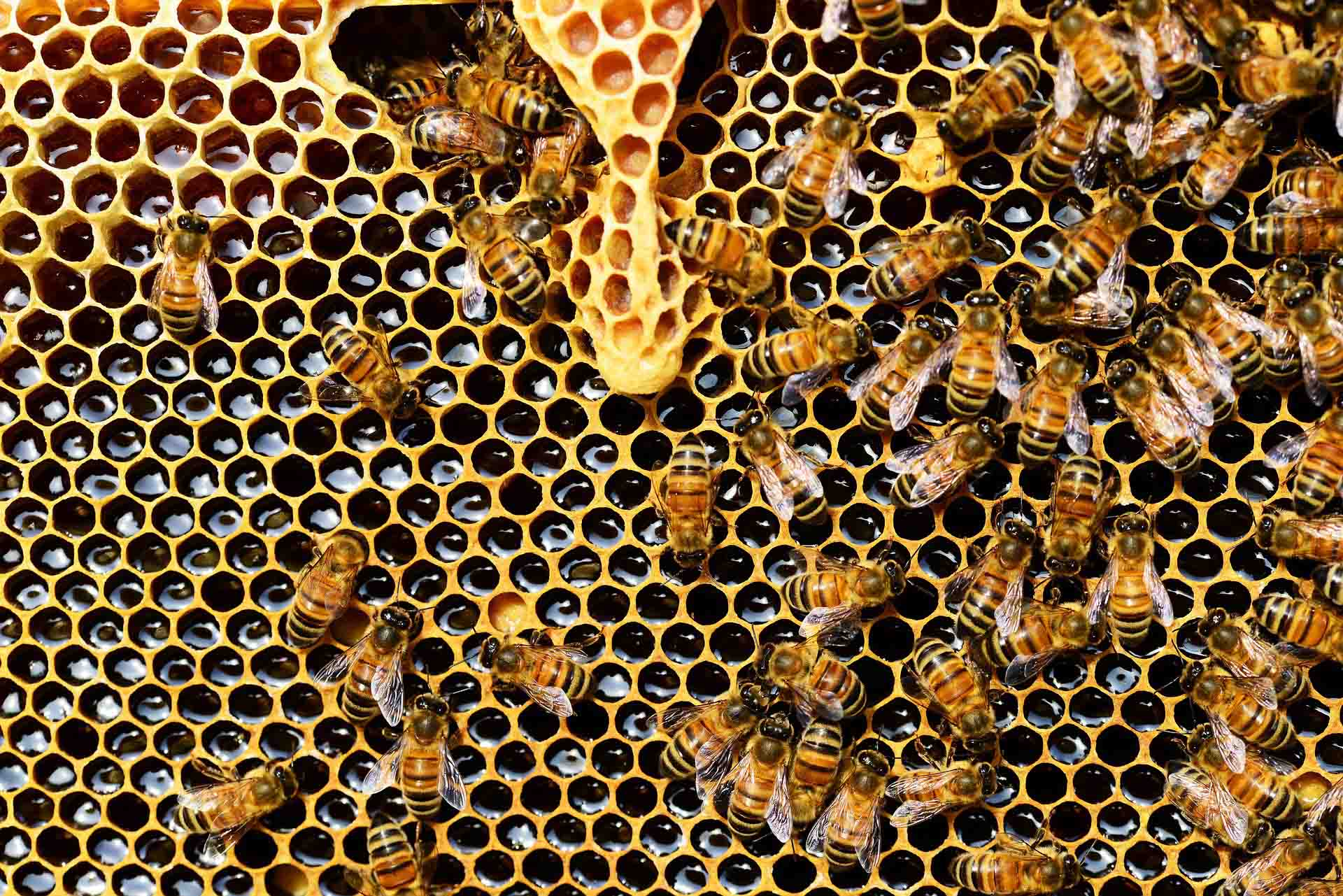
Bees working in a hive / Source
FAQ / Animals / How / Beekeeping / Health / Help / Alternatives / Purity
3. How is honey made?
Is honey bee barf?
How do bees make honey?
The process begins with honeybees flying from their hives to collect pollen and nectar. They also gather propolis, a resinous mixture collected from tree buds, sap flowers, or other botanical sources. Bees use it as a sealant for unwanted open spaces in hives.
But it’s the nectar that they use to make honey.
From Stomach to Mouth, the Process to Make Honey
First, nectar is extracted from flowers using a bee’s long, tube-shaped tongue and stored inside its “honey stomach,” or crop. Bees have two stomachs; the crop and a stomach used for eating. When complete, the crop weighs almost as much as the bee does.
Next, during the flight back to the hive, bees secrete enzymes that transform the chemical composition and pH of the nectar. This process makes it more suitable for long-term storage.
Once the forager bee returns to the hive, she will regurgitate the contents of the crop, a process called trophallaxis, and pass it on to a house bee. The house bee will then process the nectar by chewing the nectar, adding more enzymes to break the complex sugars in the nectar into simple sugars.
Finally, the nectar goes inside beeswax cells.
The Transformation Into Thick Syrup
Initially, the nectar collected and stored still contains a high water content. The bees will begin dehumidifying the nectar by fanning it with their wings. This process removes most moisture from the nectar, turning it into thick syrupy honey.
Once this process is complete, the bees seal off the cell with a wax plug. (2, 3, 4)
Honey is survival food, for bees
A bee will only gather 0.8 grams (0.0288 ounces) of honey in its lifetime. It takes 566 worker bees and a flight distance of a trip more than once around the globe to gather one pound of honey. (5)
Bees store pollen and honey during the active summer period. This cache of food stored in the honeycombs is what the bees survive when the hive cannot forage flower blossoms, such as in the winter months.
The honey can be stored in the capped cells almost indefinitely and feed around 20,000 workers plus the queen bee. In one year, a colony of bees eats between 120 and 200 pounds of honey. (6)
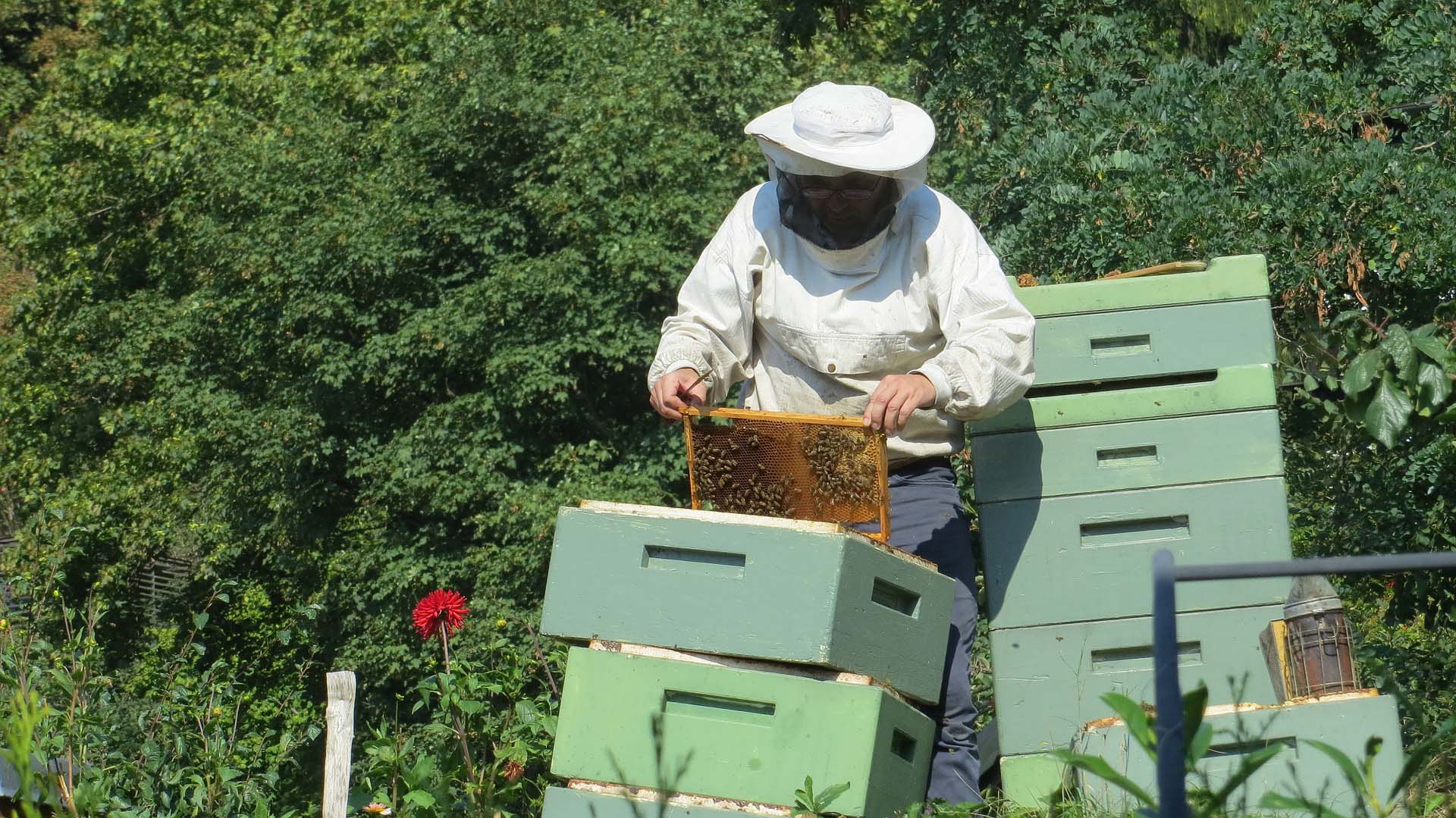
Beekeeper working with hives / Source
FAQ / Animals / How / Beekeeping / Health / Help / Alternatives / Purity
4. Beekeeping aka the Bee Industry
An in-depth look at the industry.
For this guide, there are two styles of beekeeping: commercial and backyard hobbyists.
Instead of oversimplifying and making sweeping statements about each, this section will focus on the practices that regularly occur in beekeeping and why they make honey not vegan.
Bees as commodities
It’s unfortunate but true; beekeeping often tends to be overlooked as an exploitative practice. One reason may be that people have little idea that bees are part of the animal husbandry industry, much like cows.
Beekeepers hate when I say that, but it’s well-documented.
Whether in a commercial setting or an idyllic backyard environment, raising bees for honey requires many of the same practices.
Standard beekeeping practices
The following practices regularly occur in managed bee colonies, both commercial and hobbyist setups. Not every beekeeper may use every method, but every technique listed is conventional within the industry.
Antibiotics
Beekeepers regularly administer antibiotics to their bees. (7)
Using antibiotics contributes to immune system deficiencies and promotes the development of antibiotic-resistant super-pests and diseases. (8) Hives are treated in winter when they are already stressed to prevent toxins from entering the honey supply. (9)
Artificial or Instrumental Insemination
Using specialized equipment, beekeepers inseminate Queen Bees. They use this process for breeding bees with advantageous qualities to humans. Things like being more docile, changing the queen’s color, or increasing honey production, for example. (10, 11)
The instrumental insemination method is not only violating for the queen; it’s a death sentence for the drones involved. Beekeepers crush the drones and invert their bodies to make it easier to obtain sperm. Once it’s collected, the beekeeper will discard the drone. (12)
Manipulation and interference
Over a hundred years ago, beekeepers increased the cell size of the wax foundation installed in beehives by nearly half a millimeter. The increase was from the natural brood cell size (of the European honey bee) of 4.9mm to the manipulated cell size of 5.4mm.
The thought was that the bigger cell size would produce more giant bees. It did, and those more giant bees are still around today. (13)
Food swapping
Bees make and store honey during the active months. This cache of food stored inside the honeycomb is what bees survive when the hive cannot forage flower blossoms, like in the winter months.
Some beekeepers take the honey once the worker bees finish capping it, leaving the hive without the winter store it needs. Instead, it’s common practice for beekeepers to feed their bees nectar replacements such as dry sugar, sugar water, pollen patties, and high fructose corn syrup, which isn’t the best for bees.
High fructose corn syrup can't replace honey
A team of entomologists from the University of Illinois found a possible link between feeding high fructose corn syrup and the worldwide collapse of the honeybee colonies.
“The widespread apicultural use of honey substitutes, including high-fructose corn syrup, may thus compromise the ability of honey bees to cope with pesticides and pathogens and contribute to colony losses.”
Their findings indicate that eating replacement food instead of honey prevents the bees from being exposed to other chemicals that help the bees fight off toxins, like those found in pesticides. (14)
Loss of harvest
There are five products most commonly harvested from bees: Honey, pollen, beeswax, propolis, and royal jelly.
Honey, their primary food source along with pollen, has no advantage for the bees when we remove them.
Together with the food, beekeepers also often take beeswax when harvesting honey. The process begins by collecting the entire comb structure, melting it down, and then straining the wax. Beekeepers might also take the propolis.
And then there’s royal jelly where,
- First, the queen bee is removed from a group of young bees to stimulate them into making new queens.
- Then, each new queen dines on royal jelly.
- Finally, they kill the larvae and harvest the jelly.
In each case, bees worked tirelessly to create these things and needed them to survive.
By contrast, we don’t.
Loss of life
Beekeepers typically kill queen bees every one to three years and replace them with new ones. In unmanaged hives, bees would decide if and when to remove the queen themselves.
In addition to these deliberate deaths, even the most gentle beekeepers unintentionally injure, crush, or kill some bees during honey harvesting and collection. It’s unavoidable.
While there are several methods for harvesting honey, extraction is the most common. Smaller operations with only a few colonies can use more gentle methods, like gently sweeping bees off honeycombs with a bee brush.
Larger, commercial-scale beekeepers manage thousands of colonies simultaneously, making it challenging to spend the time and necessary care for removal. Methods used with these colonies include using a leaf blower or a noxious combination of essential oils to drive the bees out of the nest. (15)
In either situation, bees can (and do) die.
False advertising and fraud
Finally, you may not be eating what you think you’re eating: mislabeling is rampant in the worldwide honey industry. (16)
One study found that 3/4 of the 60 jars of honey tested were counterfeit and contained no bee pollen. (17)
In another study, foreign sugars were found 1.4 times in every ten honey samples tested. (18)
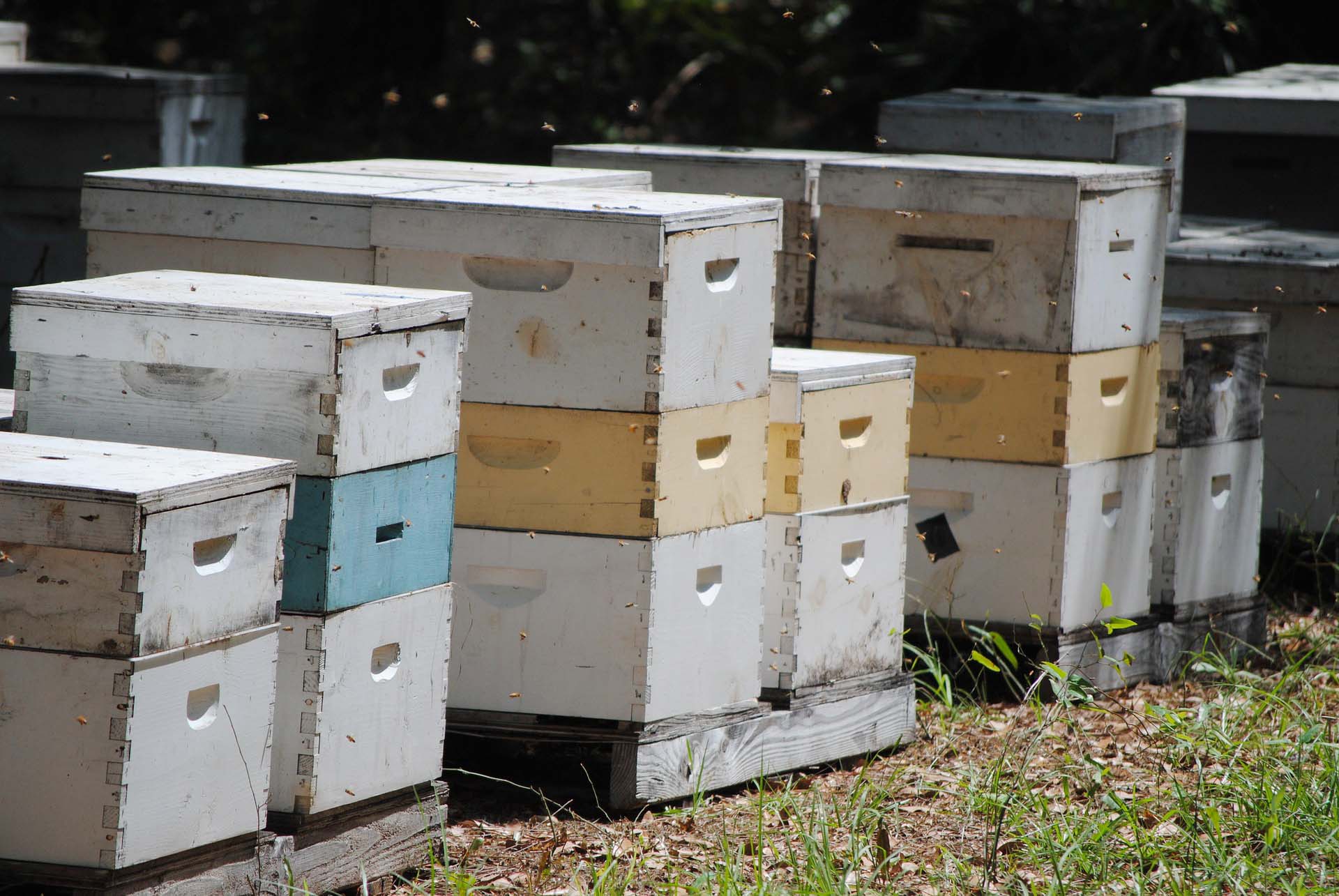
Commercial beehives / Source
Pollinators for hire
Did you know that honey and bee products account for only a tiny percentage of the entire bee economy in the United States?
The most significant portion comes from renting managed colonies to farmers to pollinate fruit and vegetable crops.
Commercial hives for hire pollinate roughly 100 different flowering plants. These plants include almonds, avocados, broccoli, cauliflower, cabbage, brussels sprouts, cherries, berries, cucumbers, lettuce, peaches, pears, and plums. Even the clover and alfalfa crops fed to cows on factory farms get pollinated by commercial hives. (19)
Pollination before honeybees
The first thing to know about honeybees is that they aren't native to North America. Honeybees come from an ancient lineage of cavity-nesting bees from Asia around 300,000 years ago that rapidly spread across Europe and Africa. They arrived in North America sometime in the 1600s. (20)
So, how did food crops get pollinated before the arrival of honeybees? The answer is native, or keystone, pollinators.
Keystone pollinators are native pollinators vital to an ecosystem's survival. The wide variety of native pollinators includes more than 3,500 species of bees (many of which are solitary), moths and beetles, and other animals such as bats and birds. (21) There is an adverse impact on keystone and native pollinator populations from honeybees through crowding and stealing pollen and nectar that would otherwise be available to them.
Managed honeybees pose risks to wild bees
Wild pollinators are in decline in many parts of the world. Because of the downturn, managed honeybees and bumblebees are frequently shipped to the United States to provide pollination services. But doing this poses dangerous risks to the wild bee population.
An entomologist at the University of California led a research team that examined the evidence by analyzing this area's extensive body of research. They discovered that managed bees are spreading diseases to wild bees.
"Even in cases when the managed bees do not have a disease, they still stress local wild bees, making them more susceptible to disease," says Peter Graystock, a postdoctoral researcher in the Department of Entomology and the lead author of the study. (22)
No, backyard beekeeping isn't better
Experts at the Department of Zoology at Cambridge University found that the rise in amateur beekeepers contributes to the decline of wild bees,
“Keeping honeybees is an extractive activity. It removes pollen and nectar from the environment, which are natural resources needed by many wild species of bee and other pollinators. . .Honeybees are artificially-bred agricultural animals similar to livestock such as pigs and cows. But this livestock can roam beyond any enclosures to disrupt local ecosystems through competition and disease.” (23)
Globalization can bring infection
One problem is that many countries have inadequate or no laws for bee movements. The globalized trade in bees has enabled almost free movement of diseases worldwide. (24)
Sadly, even if infections in managed colonies disappear, other problems arise. Resistant organisms, mites (varroa mites specifically) quickly develop a resistance to the pesticides used to control them. It’s widely thought that the varroa mite is a significant contributor to colony collapse, as are insecticides and monoculture crops.
Additional environmental costs of honey
Another important environmental factor to consider: most countries import honey. According to estimates, 42% comes from Argentina, China, Mexico, Canada, and India. About 85% of the UK comes from Vietnam, China, Mexico, Australia, and Argentina. While Germany, the world’s largest importer of honey, gets theirs from Argentina, China, and Mexico. (25)
Not only that, there’s the impact on the environment from transporting managed colonies back and forth across the United States alone pollinating crops.
Pollinators-for-hire raises ethical questions for us all
Today’s industrial pollinators spend much of their lives in the back of 18-wheelers, subsisting on high-fructose corn syrup while being shlepped back and forth across the country to pollinate acres upon acres of monoculture crops. (26)
This practice raises ethical questions for both vegans and non-vegans alike. All animals rely on plants for survival, directly or indirectly, and our food supply depends upon crop pollination.
Changing our world to benefit wild pollinators is part of the solution. Eliminating the demand for honey and bee products is the first step. Doing so would prevent millions of bees from being bred and managed to produce honey and by-products, which would reduce the transmission of disease and allow native pollinators to return to areas where managed populations have taken control.
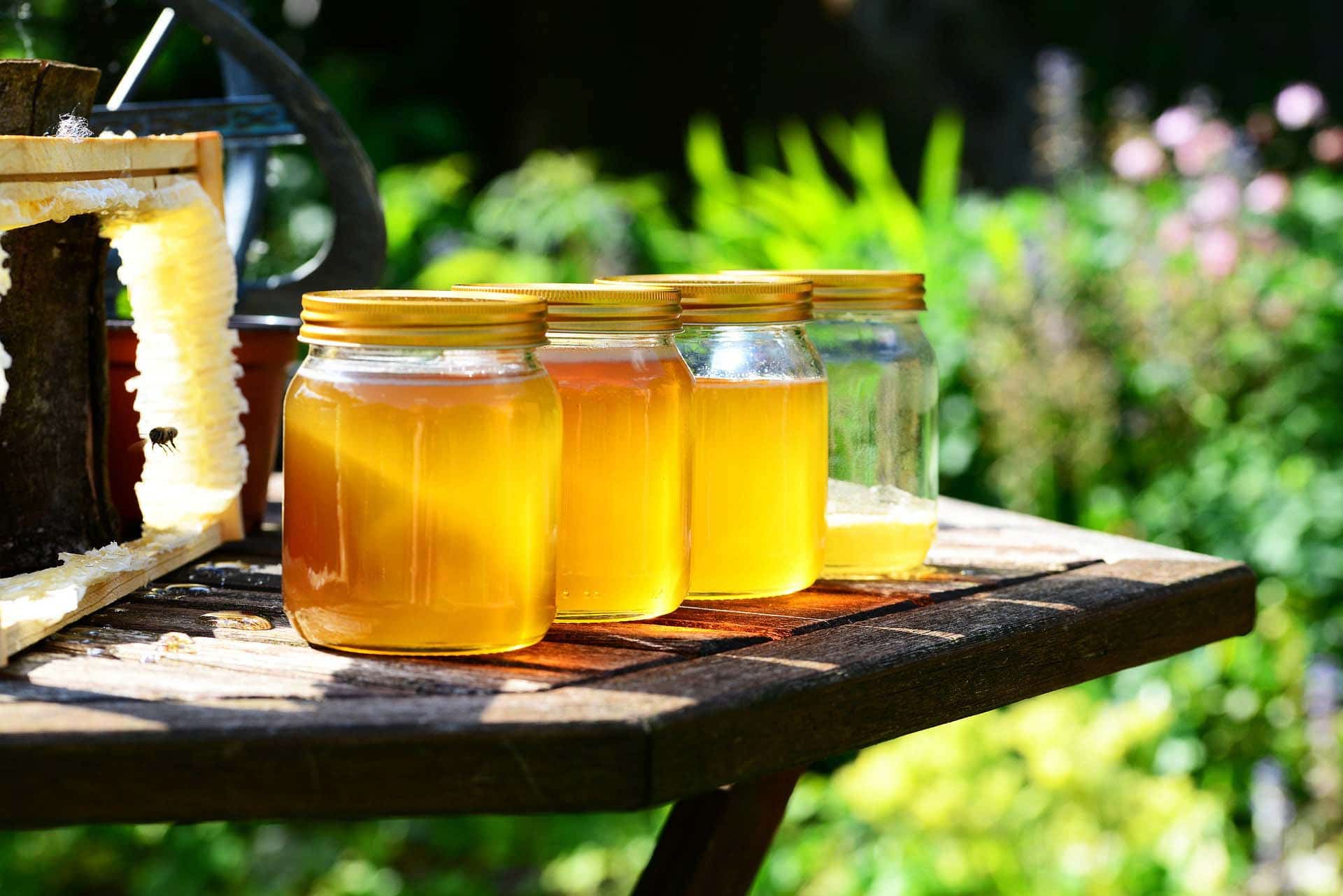
Jars of honey / Source
FAQ / Animals / How / Beekeeping / Health / Help / Alternatives / Purity
5. Is honey healthy?
Honey has a reputation for being good for us, but is it true?
The health benefits of honey
With its long list of anecdotal healing properties, people have been using honey for millennia as a medicinal remedy for many ailments. The ancient Egyptians used it, as did the Greeks, Romans, and other cultures.
Honey has history, and with good reason too. When examined, honey does contain an unusual chemical makeup.
It’s low in moisture and highly acidic, creating an environment where bacteria and microorganisms can’t grow but keep honey from spoiling almost indefinitely. Bees add the enzyme glucose oxidase, which makes hydrogen peroxide as a by-product that has antibiotic properties.
At the same time, animal studies on the efficacy of honey and bee products used for medical purposes have had varying degrees of success.
Sounds good, right? Not so fast.
Honey nutrition facts
Even if honey were the healthiest food on the planet, there'd still be no reason for vegans to consume it. But it's not. Honey, as a food, falls into the "use sparingly" category on a traditional food pyramid.
In basic terms, it is just sugar with no complex carbohydrates or amino acids and virtually no nutritional value.
According to the National Honey Board, honey contains "small amounts of vitamins and minerals, including niacin, riboflavin, pantothenic acid, calcium, copper, iron, magnesium, manganese, phosphorus, potassium, and zinc." (30). However, heating and filtering honey is a destructive process. While it does not eliminate all enzymes, it significantly reduces the number left after processing.
While nutrition is essential to our overall health, it has no role in veganism. After all, how many times have we heard that eating animals is vital for good health?
Hundreds?
Thousands?
Plenty.
Honey’s medicinal uses
With so many health benefits claimed, it would be impossible to cover them all. For this guide, I’ll cover the top three.
Claim #1: Honey soothes coughs
A 2007 study from Penn State College of Medicine of 139 children found that buckwheat honey outperformed the cough suppressant dextromethorphan (DM) in calming nighttime coughs and improving sleep.
In the same study,
“This study is somewhat limited by the fact that each child had a physician visit between the two nights of the study, which may provide some of the explanation for the improvement in all of the groups, including the no-treatment group.” (31)
Claim #2: Honey can treat wounds
In numerous studies, honey has been found effective in treating wounds. In a study, 59 patients suffering from wounds and leg ulcers – of which 80 percent had failed to heal with conventional treatment – were treated with unprocessed honey. All but one of the cases showed remarkable improvement following topical application of honey. (32)
However,
“Honey is noted to aid in wound healing because of its acidic pH level. And yes, there are some studies that show honey can have better results over conventional treatment. . .Yet, we also know that aloe vera has wonderful healing properties. A study. . .looked at the efficacy of aloe vera use with post hemorrhoidectomy patients. Those using aloe versus placebo had significant improvement with pain management and healing.” (33, 34)
Claim #3: Honey relieves allergies
Many people swear by honey’s ability to lessen symptoms of allergies, and some say that honey can contain traces of flower pollen. The notion is that exposure to small amounts of allergens is a good treatment to combat reactions.
But honey’s efficacy for treating allergies hasn’t been proven in clinical studies.
Just the opposite:
“The idea is that bees take up pollen and pass it on via honey, and then people consume the honey and the pollen and therefore build up an immunity to the pollen and have allergy relief. But, bees focus on the pollen from flowers – not those from trees & grass, which are the main allergy offenders. There is a study from 2002 which focused on allergy sufferers receiving either local & raw honey, a nationally pasteurized honey, and a placebo. There were no significant differences in allergy relief between the three treatments.” (35)
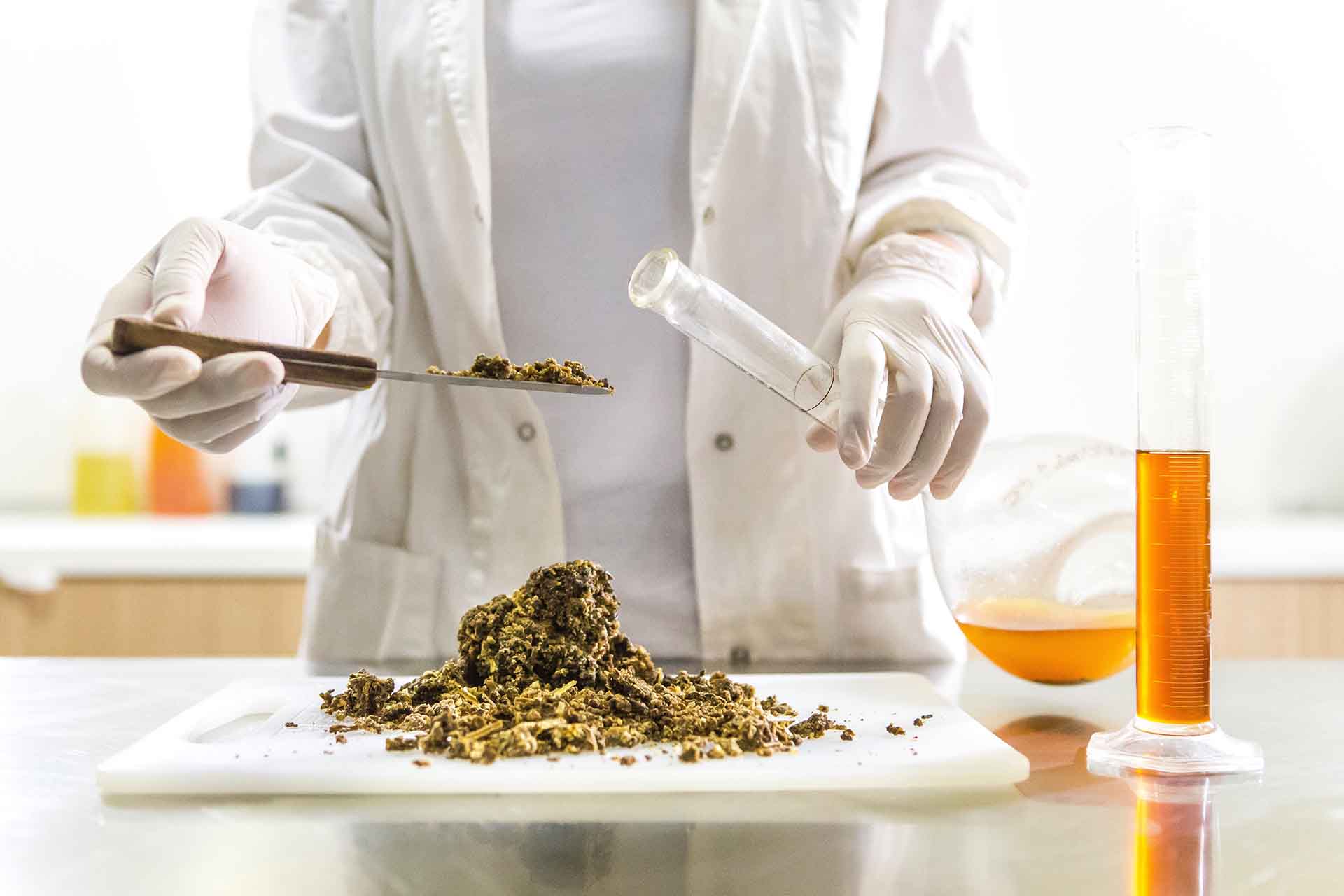
Formulating bee products / Source
Reputed medicinal benefits of bee products
Honey isn’t the only bee-derived food with purported health claims; here are the three most common foods and their alleged benefits.
Bee Pollen
Steven Novella, an academic clinical neurologist at the Yale University School of Medicine, finds no basis for recommending the use of bee pollen products. "Pollen is the ideal well-balanced food for bees, but like any other material, is not a 'perfect food' for humans. . .Bee pollen products are a classic example of the current fallacies of the supplement industry. The claims made for such products are full of hype but are completely unsubstantiated by rigorous scientific evidence. . .What passes for "scientific" evidence on promotional websites are ancient tales and anecdotes." (36)
"I hear allergy myths [about bee pollen] all the time," said Dr. John Costa, medical director of the Brigham and Women's Hospital Allergy and Clinical Immunology Practice in Boston. ". . .The wind-carried pollens from trees, grasses, and weeds that cause seasonal allergies are very light and stay airborne for a long time. The pollen in bee honey comes from flowers, and is very heavy, and falls to the ground. They are the wrong kind of pollens for causing seasonal allergies." (37)
Royal Jelly
Royal jelly is the food meant for the queen bee. Like bee pollen, royal jelly enjoys a wide variety of health and beauty claims. Yet, there are no medical studies that have definitively demonstrated therapeutic effects for royal jelly.
“Royal jelly, which is secreted from the salivary glands of worker bees, serves as food for all young larvae and as the only food for larvae that will develop into queen bees. Like bee pollen, it has been falsely claimed to be especially nutritious, to provide buoyant energy, and to have therapeutic properties.” – Stephen Barrett M.D. (38)
Propolis
Propolis is a resinous mixture collected by honey bees from tree buds, sap flows, or other botanical sources used as a sealant for unwanted open spaces in the hive.
Although propolis claims to have health benefits (as a cold and flu remedy), it may cause severe allergic reactions. (39)
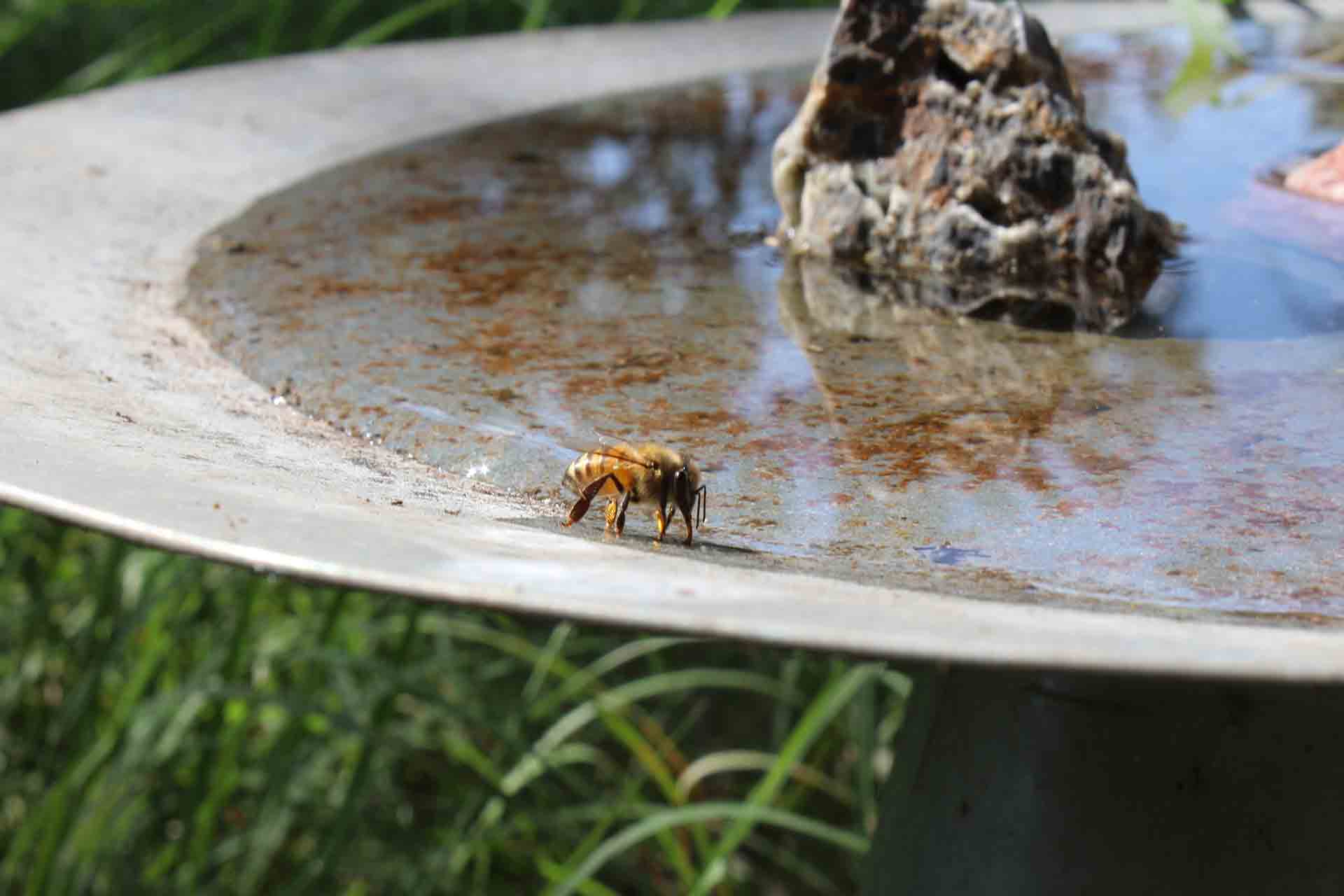
Bee drinking water / Source
FAQ / Animals / How / Beekeeping / Health / Help / Alternatives / Purity
6. How to help bees
We could not survive a world without animal-pollinated plants, making saving pollinators an absolute necessity.
Bees are well-known as pollinators, but they aren’t alone. Other pollinators include birds, butterflies, ants, and even bats, among other small mammals.
Animal pollinators are responsible for pollinating one-third of our crops; of that one-third, bees pollinate roughly 75% of them.
Easy ways to help pollinators
Without the actions of pollinators, our food supply and surrounding landscapes would collapse.
Here are six ways you can help them thrive.
Plant a pollinator-friendly garden
Habitat loss is threatening the lives of pollinators around the world. From monoculture-based agriculture to perfectly manicured lawns in neighborhoods, native landscapes are disappearing.
- Rethink your lawn. Replace all or part of your lawn grass with flowering plants. Doing so will provide food and habitat.
- Plant native flowers. Native flowers help feed bees uniquely adapted to your region.
- Choose single flower tops. Double-headed flowers produce much less nectar, making it difficult to access the pollen.
- Steer clear of hybridized plants. These plants have been bred not to seed and produce very little pollen.
- Plan for year-round blooming. Plant at least three different types of blooming flowers to ensure flowers through as many seasons as possible to provide bees with a constant food source.
- Weeds can be good. Wildflowers are some of the most critical food sources for native North American bees and other native pollinators.
If you have limited space, try to add a flower box or a container garden with flowering plants to create an inviting oasis that will help with foraging.
Supply homes for native pollinators
Native bees like to burrow. Leaving a patch of the garden or area on the lawn uncultivated in a sunny spot will encourage this behavior.
Some native bees also need access to the soil surface for nesting. For wood- and stem-nesting bees, piles of branches, bamboo sections, hollow reeds, or nesting blocks made out of untreated wood are preferred.
Mason bees need a source of water and mud, and many kinds of bees are attracted to weedy, untended spaces. (40)
Supply water
Pollinators also need a place to get fresh, clean water. Fill a shallow water container with pebbles or twigs for them to land on while drinking. Items like a birdbath with some stones on the bottom are good choices.
Maintaining the water supply is important to ensure the bees and other pollinators know they can return to the same spot every day.
Don't use herbicides or pesticides
The treatments you put on your lawn or garden can be toxic to bees and the humans and other animals who visit.
These treatments are especially damaging if applied while the flowers bloom because the chemical will get into the pollen and nectar. Then, bees and other pollinators collect the contaminated nectar and pollen and take it back to the hive, where it gets into the honey. Next, it's passed on to humans when they consume it.
Ladybugs, spiders, and praying mantises will naturally keep the garden populations in check.
Don't mow often
Of all the actions on this list, this one might be the easiest to do. Or not do as in this case.
No lawn is best, but if you have one, mow it less often. Cutting every two to three weeks allows insects and other pollinators to forage on flowering plants before disappearing again.
Leave bees (and their products) alone
There are many different ways to be a voice for pollinators. In researching this topic, you may read that one way to help bees is by purchasing honey and other bee products from small, local farmers.
In contrast, let's do something different. Don't buy these products.
Instead, invest time and money into helping native pollinators in your yards and neighborhoods. Doing so will help the rapidly declining populations where you live and have the biggest impact.
Learn more about bees
Look further at our current agricultural landscape and the mysterious world of the beehive through documentaries and films about bees.
Continue » Vegan Flicks.
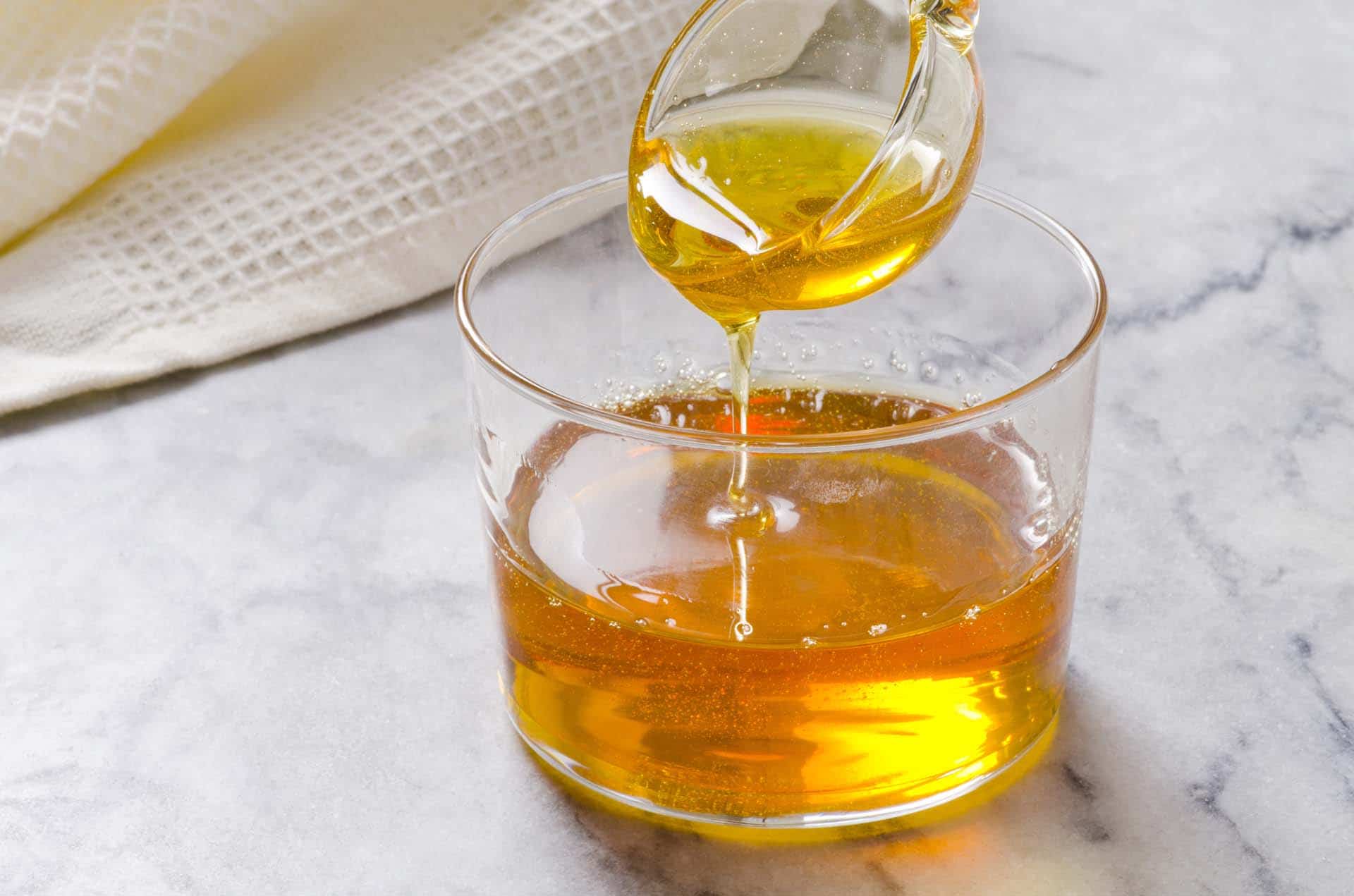
Agave syrup / Source
FAQ / Animals / How / Beekeeping / Health / Help / Alternatives / Purity
7. Honey and bee product alternatives
Vegan alternatives to honey and bee products are widely available.
There are plenty of vegan honey alternatives to help satisfy any craving. While some are more like honey than others, all come from plants.
Vegan honey alternatives
- Agave Nectar. It comes in various styles ranging from dark amber to light, each with a distinct flavor.
- Barley Malt Syrup: A malt-like syrup comes from sprouted barley, roasted and cooked down to a syrup.
- Brown Rice Syrup. A thick dark syrup with a caramel-type flavor.
- Coconut Nectar. Made from the reduced sap of coconut palms, it has a sweet, tangy taste with no coconut flavor.
- Maple Syrup. This pancake staple comes from the sap of sugar maple, red maple, or black maple trees.
- Molasses. Like other plant syrups, molasses has several varieties and flavors.
Shop for vegan honey alternatives
Make your own honey alternative
Date paste could almost be the ultimate all-natural sweetener that goes perfectly in virtually any recipe. It’s smooth and silky and just a bit like caramel. You might think it’s a strange replacement for honey, but it works just as well as honey in any baked good you can dream up.
So, goodbye refined sugar and hello easy-to-make one-ingredient date paste!
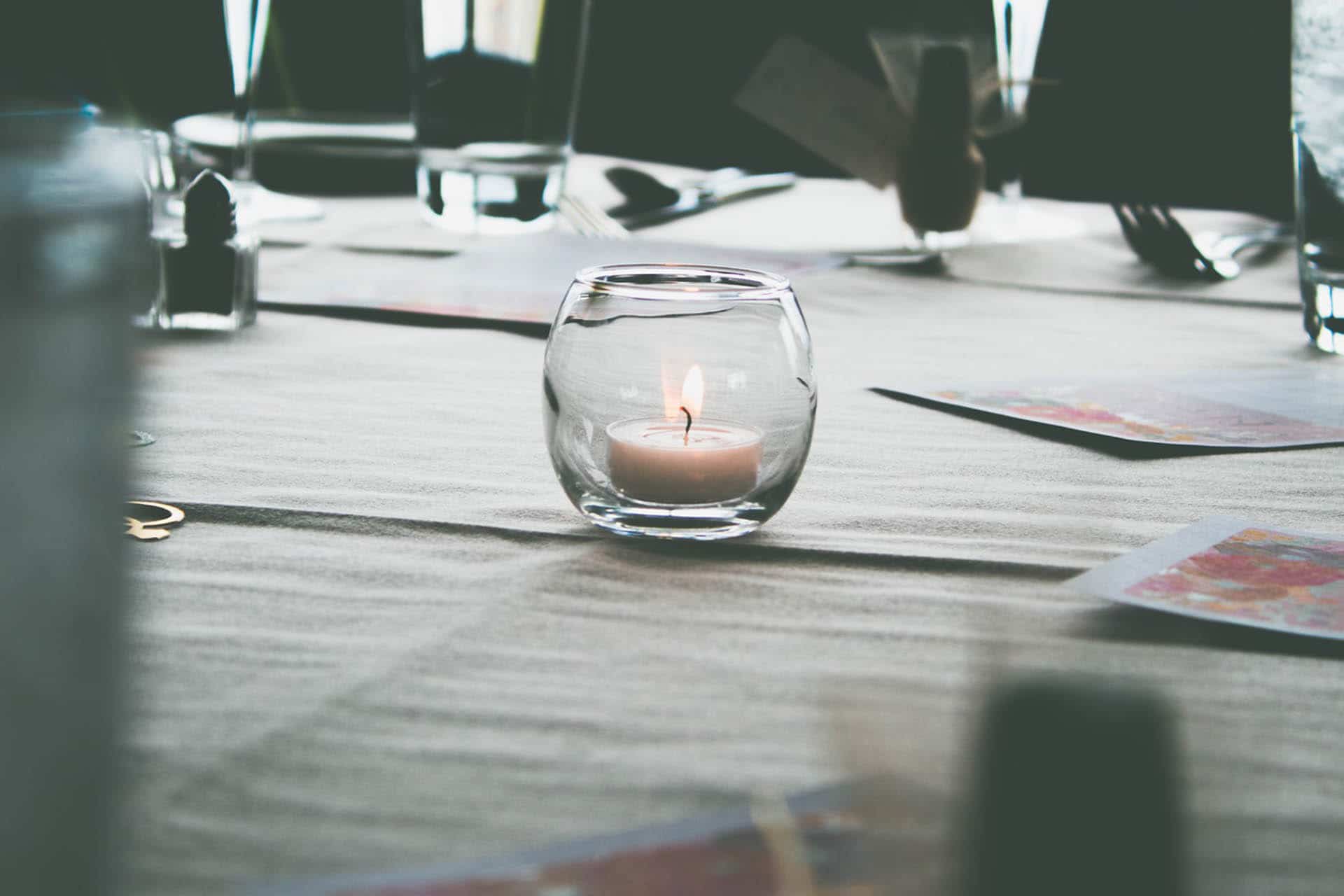
Soy candle sets the vibe / Source
Vegan beeswax alternatives
“It’s none of your beeswax!” is a phrase I would frequently use as a six-year-old child wanting to keep a secret, and I find that my meaning then still applies today, “it’s not yours; you can’t have it.”
Back then, I was using beeswax to mean business.
Today I mean it more literally; let’s leave the wax to the bees.
There are plenty of great alternatives.
Soy wax
Soy wax is a vegetable wax made from the oil of soybeans. After harvesting, the beans are cleaned, cracked, dehulled, and rolled into flakes. The oil is extracted from the chips and hydrogenated. The hydrogenation process converts some of the fatty acids in the oil from unsaturated to saturated.
This process dramatically alters the oil's melting point, making it solid at room temperature. (41)
Candelilla wax
Candelilla wax is the exudate found on the leaves of a small shrub native to Mexico and the southwest. It is softer than Carnauba wax and is often used to make candles. You’ll spot candelilla wax in lip balms, lipsticks, body butter, creams, lotions, pomades, and other products.
Related Reading » From Desert Plants to Dollars: Candelilla, Wax Making, and Wax Products
Carnauba wax
Carnauba wax comes from the palm tree Copernica Cerifera leaves, the Brazilian “Tree of Life.” This tree grows and flourishes only in the northeastern parts of Brazil along river banks, streams, and damp lowlands. It exudes a wax through the petioles of its fan-shaped leaves, preventing dehydration from the equatorial climate.
The leaves contain wax cultivated in a manner that does not harm the tree. (42)
Bayberry wax
Bayberry wax is an aromatic green vegetable wax. It is collected from the surface of the fruit of the bayberry shrub (wax-myrtle) by boiling the fruits in water and skimming the wax from the surface.
This naturally aromatic wax possesses a unique fragrance that has become a classic holiday scent. (43)
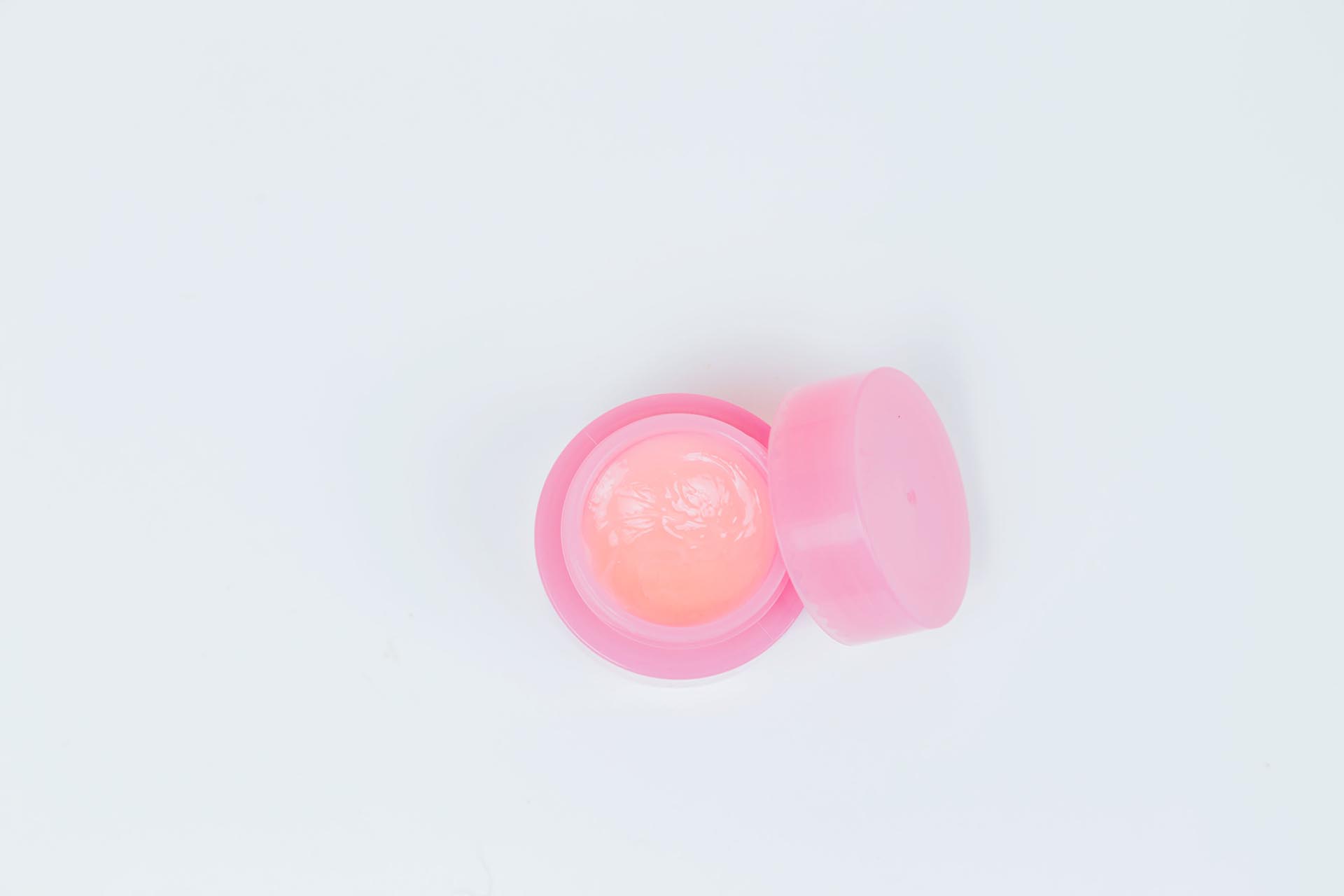
Potted lip product / Source
Vegan lip products
Dry, chapped lips are uncomfortable and can indicate an underlying illness or condition you may not know you have. Applying lip balm can help cure some of the more common causes of chapped lips. It can help prevent chapped lips from occurring, too.
One of the most common ingredients in lip balm is beeswax. Since vegans avoid beeswax, you'll want to look for lip balms made with pure essential oils mixed with plant waxes.
Here are a few brands I've used and like, made with natural, vegan ingredients to help keep those kissers kissable.
- Ellovi Lip Butter (my favorite)
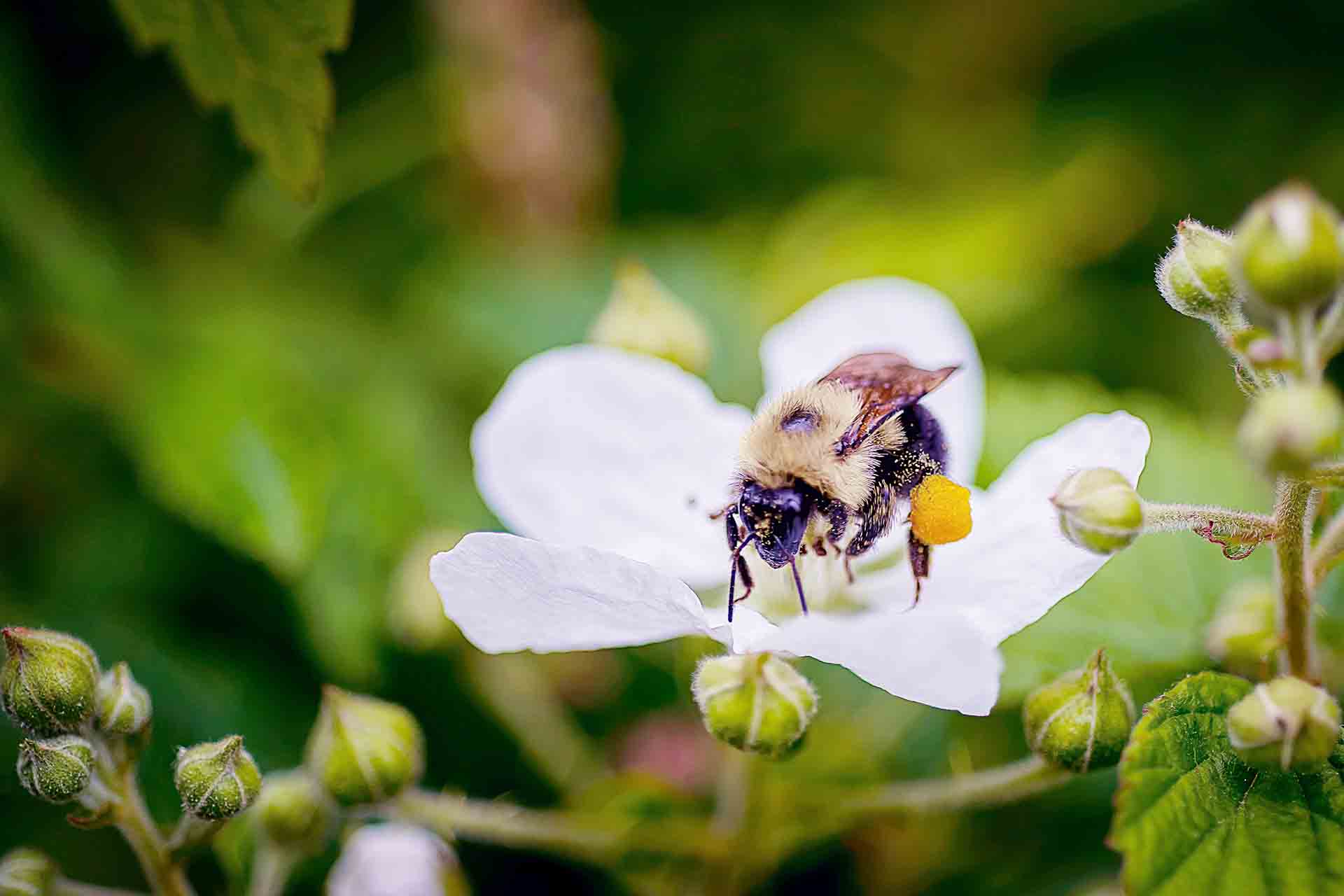
Bumblebee collecting pollen / Source
FAQ / Animals / How / Beekeeping / Health / Help / Alternatives / Purity
8. Perfection and purity
“Don’t let the perfect be the enemy of the good.” – Voltaire
Real talk about veganism
Vegans face a lot of stereotypes. The idea that vegans who remain steadfast about their convictions put personal purity ahead of being an effective advocate is one of them.
This notion comes from people who believe every action harms some animals, so worrying about tiny amounts of animal ingredients in food isn’t productive. They label this anti-vegan because it could scare away curious non-vegans from attempting veganism.
Generally speaking, this idea is ridiculous. It doesn’t give people enough credit.
Worse, it’s false and only ends up confusing people unfamiliar with what veganism is.
The truth will set bees free
Declaring that vegans shouldn’t worry about consuming animal products is incredibly misleading.
Today, there are so many unavoidable non-vegan products like medications, cars, or laptops. Our world is primarily a non-vegan one.
Because of that, at minimum, vegans should avoid every non-vegan product possible.
Honey and bee products are solidly on this list.
No one is perfect (including you)
Contrary to random memes on the internet, veganism is not about perfection or purity.
I repeat, there is no such thing as a perfect vegan.
You will fail and make mistakes in your veganism.
I will, too.
All of us will.
We’re fallible.
Human.
Please don’t let small mistakes discourage you. Failure isn’t an end.
Instead, it’s the process.
Beware watered-down ethics
During your vegan journey, you’ll read lots of different takes on veganism.
Some articles advocate never making veganism look difficult by asking what the ingredients are at restaurants. Others will instruct you not to decline non-vegan food at family gatherings in case you hurt the feelings of a well-intentioned person.
Those same articles will tell you that perfection and personal purity go against the general goal of animal liberation of less suffering.
It simply is not true.
As an ethical philosophy, veganism is not about the reduction of suffering. Veganism is about life, and it is about death.
I’m not trying to be melodramatic; it’s the truth. Our choices either spare lives or take them.
Do vegans want to reduce the suffering of all animals? Yes, of course.
But through freedom and autonomy, not bigger cages or humane deaths.
Inspire by example
The best way to inspire people is through honest and open dialogue followed up by living by example.
As a vegan, you’ll be challenged to set aside your vegan ethics to cater to someone else.
Don’t do it.
If it’s someone who loves you, they’ll understand and respect you. If it’s someone who doesn’t, you’ll gain more respect for living your convictions rather than conforming to what the mainstream has decided is normal.
If you set aside your vegan ethics for convenience, other people will too.
Live with intention and save as many animals as possible.
You don't have to hide, you can thrive
Along the way, you might find yourself in a situation where you feel you need to hide your veganism.
But you shouldn’t; saving lives is no reason to be ashamed.
Be who you are, unapologetically. You are changing the world for animals. Activism is necessary and vital work. Advocate quietly or loudly; it doesn’t matter. Just continue to advocate without setting your ethics aside.
People might tell you that having, “a little bit of animal products won’t kill you,” and they’re right.
Consuming some animal products won’t kill you.
But it will kill animals.
A clear and consistent message
Avoiding honey or bee products is consistent with veganism as an ethical philosophy because a bee is an animal. It has nothing to do with perfection or personal purity.
As vegans, we cannot ignore the bee-husbandry industry's ethical implications and environmental consequences. Doing so reduces our credibility as a serious movement trying to affect change.
Honey isn’t some magical ingredient no one can avoid. It’s an animal product that has been mass marketed and manufactured for generations and tested on animals.
With so many vegan alternatives available, honey is not only exploitative; it’s unnecessary.
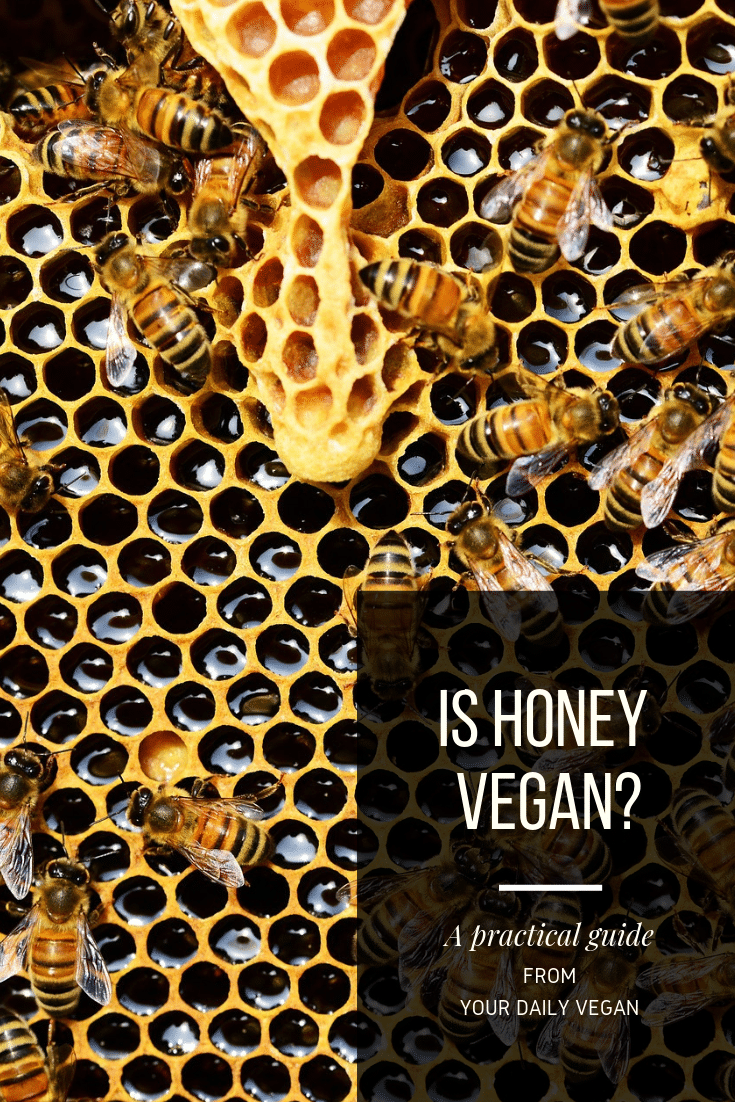
Truth in advertising
I am committed to providing accurate information to the vegan community. Meticulously researched, the topic explored in this guide contains the information available at the time of publishing.
I don’t just say it; I source it too.
Please contact me if you find incorrect data.

